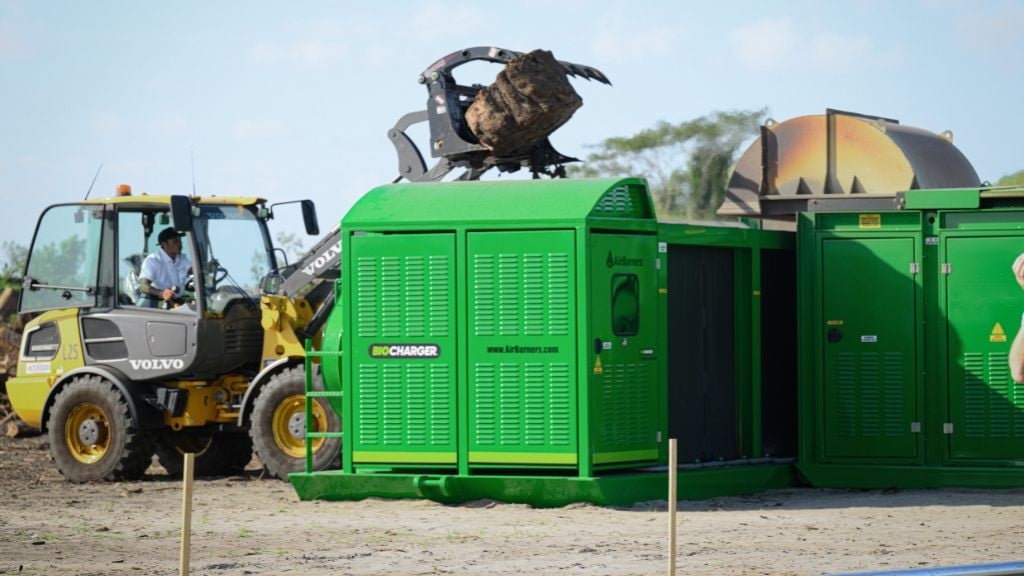
On this Earth Day, let us reflect on the importance of recycling naturally occurring resources and explore innovative ideas for the conservation of a healthy, shared environment. Biosolids and organics and the careful management of these valuable resources warrant a closer look.
Historically, biosolids and many organic food “wastes” have been ignored, buried in landfills and/or brushed aside as pesky material, with little to no value. We are proud to be part of a group of dedicated scientists, researchers, engineers and other industry professionals, all of whom are firmly committed to changing this way of thinking.
Here are eight (8) ways that biosolids and organics can contribute to a healthier environment when advanced treatment technologies are utilized and best management practices are followed:
- Creation of nutrient rich, pathogen free biofertilizer products – capable of promoting robust plant growth and replenishing the health and productivity of our soils. The many micro and macro nutrients inherent in fully processed biosolids and organics play an essential role in this important practice.
- Reducing our reliance on depleting resources – It is now common knowledge that our global supplies of mined phosphates are dwindling quickly and will be completely gone by somewhere between 2030 and 2050. On the other hand, when organic matter and nutrients inherent in biosolids and organics are recycled, the practice closes the loop and helps contribute to economic and environmental prosperity.
- Protection of our natural water courses. Healthy soils are far more effective in retaining water, promoting plant growth, and resisting erosion. Therefore, when biosolids and organics are utilized to build healthy, less porous soils, we reduce the potential for undesired run-off of nutrients (eutrophication) into the rivers and lakes that we rely on for clean drinking water.
- Reducing our carbon footprint. Biosolids are an organically based material and they typically contain a high percentage of carbon. When treated using advanced technology and utilized following best management practices, (such as sub-surface injection), the carbon stays in the ground. Conversely, when biosolids are not properly recycled, (eg. are dumped into landfills), the carbon eventually decomposes and creates undesirable greenhouse gas emissions, which then contributes to global warming.
- Diverts “waste” from landfills. Public understanding that landfills cannot contain infinite amounts of waste is growing. As an example, Ontario’s 32 largest landfills are estimated to have less than 25 years of available capacity remaining. Therefore, there is a great environmental benefit to diverting the more than 9 million dry tons of biosolids produced annually in the USA and Canada (alone). In 2014, the City of Toronto was able to achieve a 100% diversion rate in its biosolids management program. Innovative conversion technology and best management practices played a big role in this success. Others can do the same.
- Job creation. When biosolids and other non-hazardous organic materials are properly treated and managed, the practice generates jobs and revenue for the economy. For example, one study conducted by the Ontario Waste Management Association estimated that Ontario (alone) could improve GDP by $1.5 billion and create 13,000 new jobs by reusing and recycling the resources it already has – including biosolids. These are benefits that can be realized in most jurisdictions throughout North America, and, in fact, many other countries around the world.
- Production of biogas for green energy. Advanced technology for the treatment of biosolids and organics can also be paired with anaerobic digestion. In this scenario overall volumes are reduced and significant increases in biogas production can be realized. This naturally-based resource can then be further converted into “green” energy and utilized to power wastewater treatment plants, reducing GHG’s and operational costs and converting them into Wastewater Resource Recovery Centers (WRRC’s).
- Alternative carbon source. In some wastewater treatment plants, biological nutrient removal (BNR) systems are utilized to remove nitrogen and phosphorus from wastewater before it is discharged into surface or ground water. Processing technologies are now available that allow treated biosolids to be recycled back into the BNR system as a safe, cost–effective alternative carbon source, thus replacing methanol or glycerol.
Company info
125 McGovern Drive, Unit #1
Cambridge, ON
CA, N3H 4R7
Website:
lystek.com
Phone number:
226-444-0186



